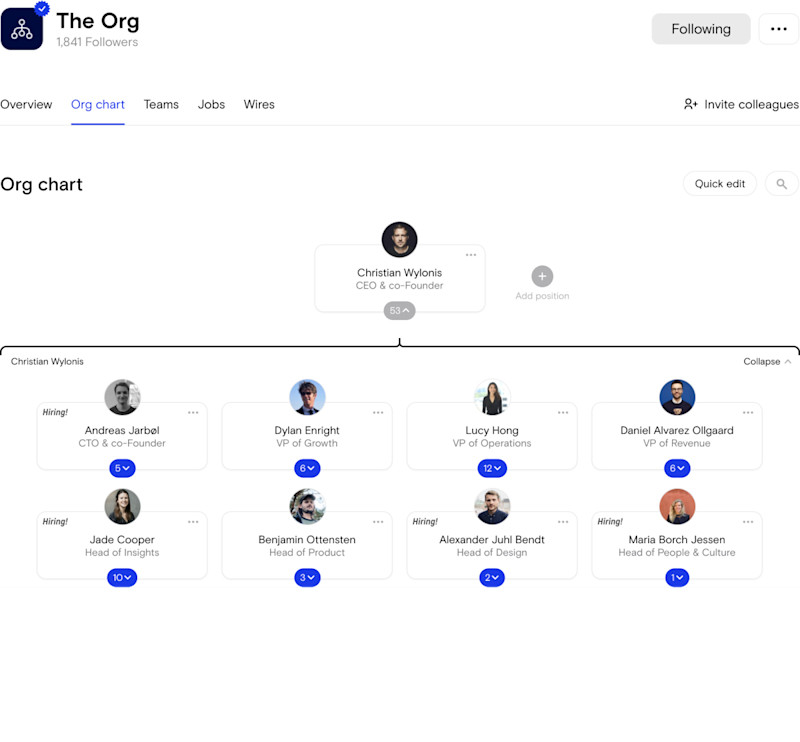How to Make an Org Chart with The Org
Table of contents
Get your company onboarded to The Org and start attracting the best talent with org charts that show off the heart of your organization: your people.

Ready to join the 300,000 companies using The Org to attract the best talent and show off their teams to the world? We’re here to help. In this step-by-step tutorial we’ll cover:
- The benefits of a completed org chart
- How to pick the right org structure that will grow with your company
- How to build an org chart on The Org automatically
- How to build an org chart on The Org manually
Let’s dive in.
How Does an Org Chart Help an Organization?
Organizational charts have always been a staple in HR departments, at startups and large companies alike. Founders at early-stage startups use org charts to map out the different work functions in their organization, and hiring managers use them as planning tools to scale team headcount in the future.
When used to its fullest potential, an org chart can be so much more than a forgotten file in the corner of your desktop. Here some of the biggest benefits to maintaining a completed org chart:
Transparency
- Completed org charts increase internal transparency and trust
- Employees know exactly where they stand
- An org chart answers questions like “Who is my manager?” “Who does my manager report to?” “How senior or junior am I in this organization?” “How many direct reports does the CEO have?” “How does information get passed down from the highest levels of the company to me?”
Faster communication
- Updated org charts save time and speed up business processes
- An org chart lays out who is responsible for what at a company. A quick glance of an updated org chart should be able to tell any employee who is the owner of which project, and how to reach out to them. Simply adding in descriptive bios and job titles can cut out miscommunication and save time for employees trying to push their initiatives through
Streamlined onboarding
- Especially useful for hybrid and remote teams
- It’s already daunting enough to join a new company - don’t leave new hires feeling lost as well
- An org chart shows exactly who new hires are working with, who their manager is (and what they are responsible for), who their manager reports to and where they fall within the greater organization’s strategy
- Easily see all the teams and departments at the company, how they feed into the executive team, what projects are being worked on and which ones are prioritized
Hire and plan for the future
- An org chart is an extremely useful tool for hiring and planning
- Quickly spot which teams are hiring or which may need more support
- Visualize workloads
- A planning aid for how to scale in the future. See exactly how your company will look before and after a hiring plan by placing positions in your org chart
Build relationships
- Org charts can be a tool for networking internally and making connections. With the advanced workstyle features on The Org, you can actually help employees get to know one another before they’ve even met
READ: Why Have an Organizational Chart?
The bottom line: An org chart increases efficiency in a company by giving employees access to information and streamlining communication.
In order to achieve operational transparency, it’s essential to lay the foundation of your org chart right from the beginning, so it can grow seamlessly with your company as you scale.
Here are a few pointers to consider as you lay the groundwork for your org chart.
Structure
An org chart is an internal map of how your organization communicates. Ask yourself, “how do I want information to flow in my org?” The reporting structure — or how different levels of employees interact — will form the backbone of your org chart. Reporting structure can also contribute to the company culture you want to build.
As you grow, are you looking for information to flow through a chain of command or a traditional pyramid hierarchy? Do you want all information and power to be distributed by employees equally? If you are looking for inspiration, check out the six most typical reporting structures companies use, complete with example structures from org charts on The Org.
Growth
After you choose the reporting structure you want for your business, ask yourself, “will this structure be able to adapt as my business grows?” Think about what an org chart change would look like in the short term (five new team members) and the long term (100 new team members). Every company's journey will look different, but if you are curious about what an org chart can look like at different stages of growth, check out how a startup org chart evolves over time.
Job Titles
Job titles are the secret ingredient that tie your org chart together. Having thoughtful and consistent job titles for every level of your organization not only will make it easier to build out your teams, but will also promote a sense of clarity and unify all the teams within a company.
For example, a junior sales associate might report into teams that feed into the Chief Growth Officer, while on the other side of the organization, a junior product manager ultimately reports into the Chief Product Officer. This level of symmetry clears up confusion and streamlines your internal growth ladder. Stumped on the appropriate job titles to use in a startup of your size? Check out our guide on different job titles and how to use them.
Making an Organizational Chart
With the correct reporting structure picked out and your job title language hammered down, you are officially ready to start adding team members to your org chart.
There are two ways to get started building your org chart on The Org:
- Import your team data directly from your human resource information system (HRIS), Applicant Tracking System (ATS) or Slack account
- Add your team members and an org structure manually in minutes with our intuitive, user-friendly design
Add team members to your org chart automatically
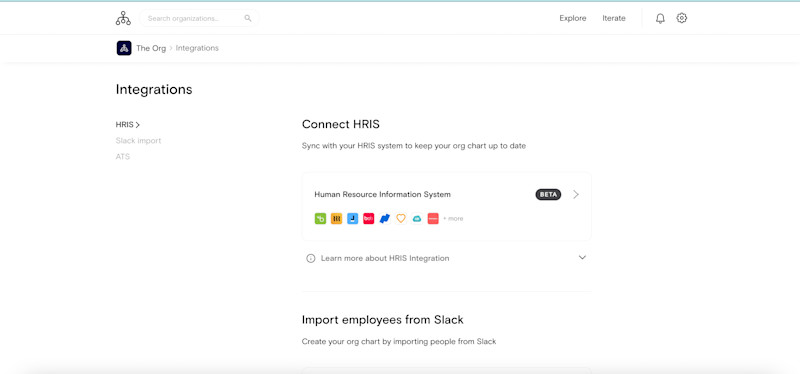
The Org gives you two options to upload previously existing employee data straight to your org chart.
Sync with HRIS and ATS
Join your organization. Simply type in your work email to get started Once your org is set up, you’ll be directed to your company page. Click on the org chart tab. On the right hand side of the page, click Integrations To pair with your Human Resources Information System (HRIS), simply click on the list of available integrations and select yours to start syncing For connecting your Applicant Tracking System (ATS), click on the list of available integrations and select yours to start syncing
Import positions from Slack
You can also set up your org chart by uploading your employee directory from Slack. To do this:
- Select the Slack import option in the middle of the Integrations page. You can also click add people directly in the org chart and choose “import positions from Slack”
- You’ll then be redirected to Slack’s website to sign-in. Sign-in to your company’s workspace
- Allow The Org to access your Slack’s workspace
- Positions will start importing automatically
- When it’s done, scroll down to “positions unplaced in the org chart”
- Add in positions to the chart in the order you want by adding in job titles
Managers and direct reports form the brick and mortar of your org chart. No matter what your reporting structure is, make sure to designate to whom an employee reports so they show up in the right spot!
Add team members to your org chart yourself
Step 1: Join Your Company
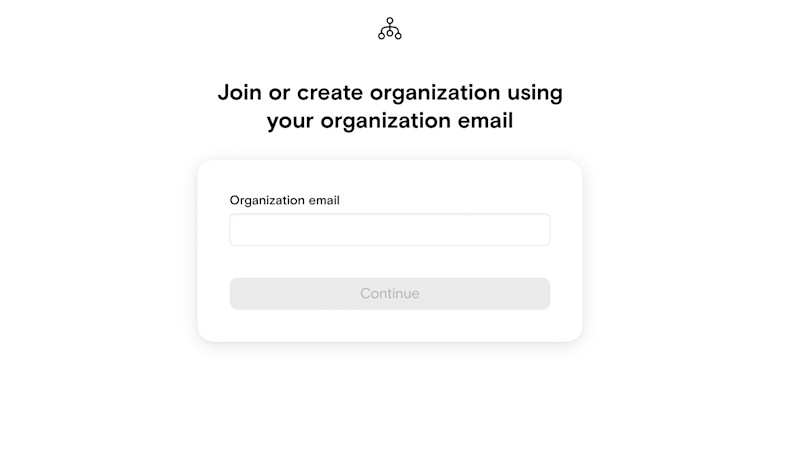
Make sure you’ve signed up with your work email. Employees can join later by signing up with the email extension you select for your company.
Step 2: Add in top decision maker(s)
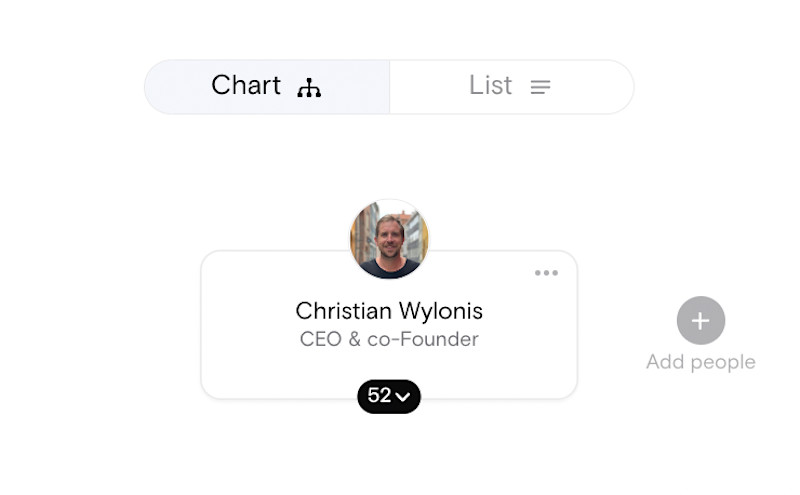
After you’ve joined your company, you should be looking at your blank company page. Click on the org chart tab to start building. In the center of the page, click + add people.
If you’ve decided to take a top-down approach to your org chart, start by adding in one main decision maker for your company. A top decision maker could be a founder, a president or some other executive member of the team. In most cases, and for the sake of this guide, we will call the top decision maker the CEO.
There doesn’t necessarily need to be one person at the top of an org chart, either. Several companies choose to split decision making at the top into a dual executive model — like Netflix’s co-CEOs Ted Sarandos and Reed Hastings.
All positions will stem from the top decision maker, so be mindful of that as you are building out the rest of the chart.
Pro tip: Don’t skip the bio! The CEO is one of the most clicked-on positions in an org chart. For public org charts, this position gets more traffic than any other in the company. Sweat the details by adding in descriptive bios for the top decision maker.
A couple of points to include:
- A summary of the person’s role and what divisions they oversee
- A quick resume summary or any relevant roles/companies this person worked for
- Personal details such as hobbies outside of work, where they’re from or a fun fact
Step 3: The executive level

The next layer of your org chart should include all of the CEO’s direct reports. This is the core leadership team at an organization; some companies call it the executive team or the C-suite. While the actual name for the tier under the CEO doesn’t matter all that much, consistency does.
As you are building out your org chart, consider having job titles that can be replicated in every function of your business. For example, at the C-suite level this could look like:
- Chief Technology Officer
- Chief Product Officer
- Chief People Officer
- Chief Marketing Officer
…and so on.
Step 4: Adding in the full team
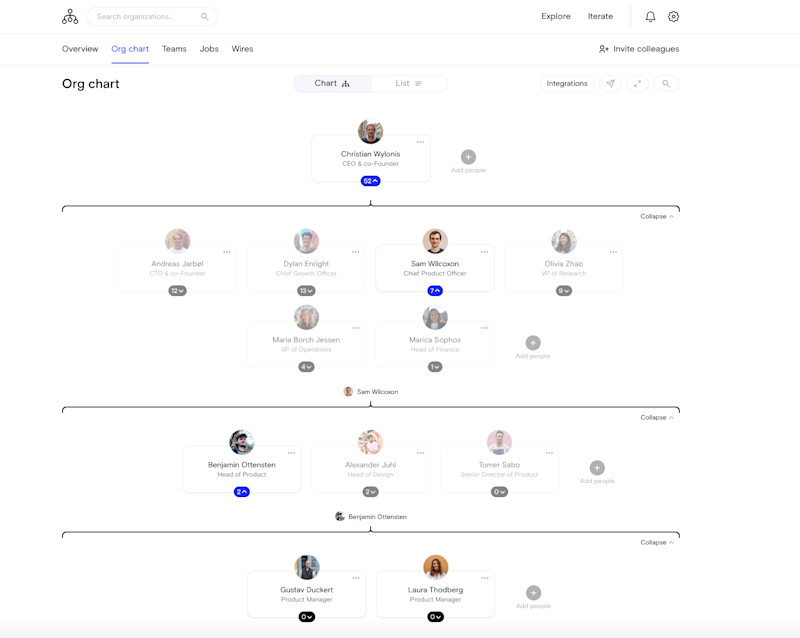
As your org chart fans out, you can decide how you want to structure leadership within a team at your company. Each position listed could have several direct reports or none at all. Here is an example of what a product team could look like as you expand the branches of your org chart:
- Chief Product Officer
- Head of Product
- Head of Design
- Director of Product
- Senior Product Manager
- Visual Designer
- Junior Product Manager
Step 5: Invite colleagues!
Your org chart is a living, breathing document consisting of all the people who work in your organization. Invite team members by clicking invite colleagues in the right-hand corner of the org chart view.
Your team members will get an email from The Org to sign up for their free account, where they can join your organization with their work email address. Encourage your colleagues to sign up, create a profile, write a bio and fill out their workstyle to give a more complete picture of who they are and what they do at work every day.
This not only will give every team member a sense of where they are on the team, but will help new team members get onboarded and acquainted with their colleagues faster.
Using The Org for Employer Branding
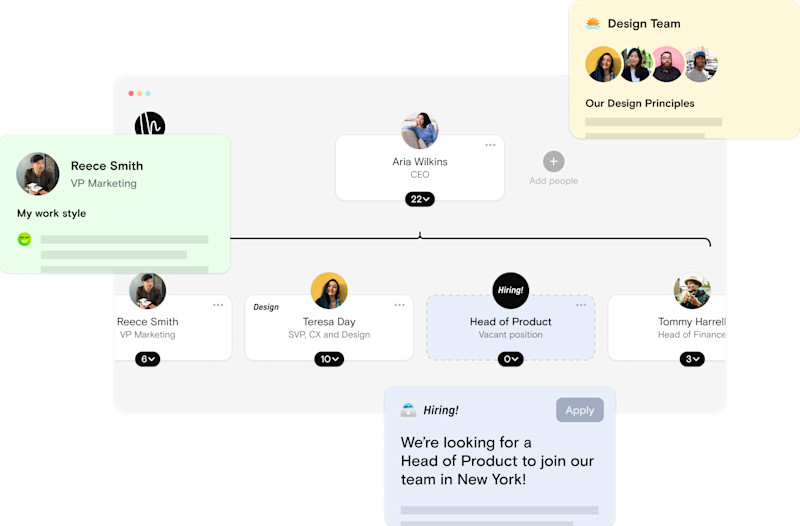
Here’s our best kept secret about hiring: org charts are a fantastic employer branding tool. Attract the best talent and help prospective job candidates understand your company’s culture through organic profiles of your team members on The Org.
The Org can be your hub to show off your great team and culture to prospective candidates. Take advantage of everything your company page has to offer with our employer branding features:
- Jobs: Post open roles directly in the org chart. Prospective candidates can see who the hiring manager is for each role, as well as who their future team members could be and how they fit into the organization
- Team values: List the core values and mission-guided principles unique to your org right on your company page
- Insider experiences: Place quotes and testimonials from employees about what it's really like to work at your company so prospective candidates can hear straight from the team
- Teams page: We know that at startups, many teams work cross-functionally or outside of their designated work function. Show off how different employees interact with a dedicated teams page, complete with what they do. Tip teams don’t just have to be work related. Check out the hard workers on The Org’s party-planning committee or our soccer champions on The Org FC
- Wires: Post announcements, new hires and product updates right to The Org. Everyone on your team will get notified at once, and so will the outside world. It’s a win-win
Once your org chart is filled out and every employee’s position is up to date, share your org chart with the world! You can embed your org chart on any webpage using our embed function or the paper airplane icon on the right-hand side of the org chart view.
Looking to make the absolute most of your employer branding strategy with The Org? Check out some of our most popular Guides to keep learning and strengthening your hiring strategy 💪
- Why a Public Org Chart is Useful for Recruiting
- How to Create a Positive Candidate Experience
- Top Employer Branding Trends 2021
Still having trouble? Check out our support page or feel free to get in touch with our team at support@theorg.com ❤️
In this article


The ORG helps
you hire great
candidates
Free to use – try today
